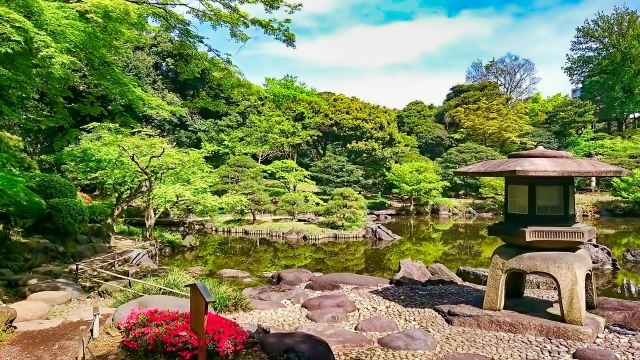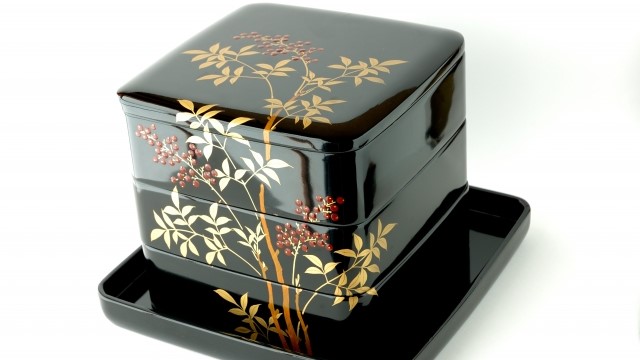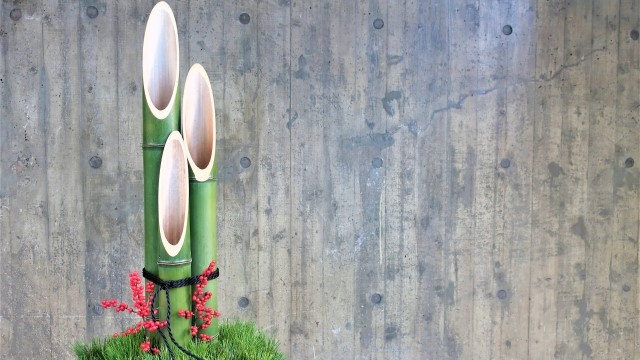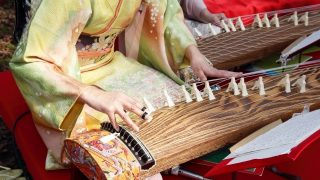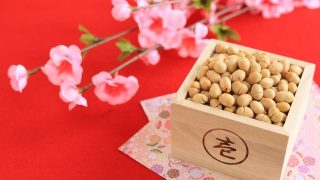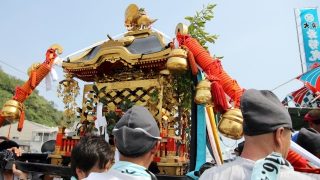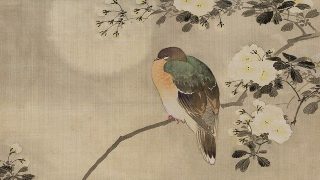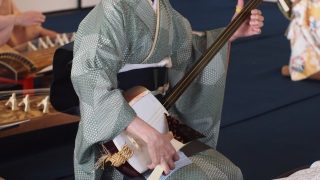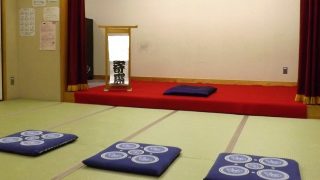About Nihon Teien (日本庭園- Japanese garden)
Nihon Teien is a traditional Japanese garden.
The Japanese garden is generally characterized by a pond at the center, a mountain that makes the most of the undulations of the land, and garden stones and plants as natural stones to create a view that can be enjoyed in each season.
The Japanese garden is one of Japan’s traditional cultures. It has been a part of Japanese daily lives since ancient times and has a profound Japanese spirit. By learning about the worldview and rules of the Japanese garden culture, passed down from generation to generation, you will feel its deep appeal and commitment.
The beginning of Japanese garden
The first Japanese garden in Japan was built in the Asuka period. It was made by an engineer who came from the Korean Peninsula. During the Nara period, the Chinese (唐-Tang Dynasty) influenced the garden. Excavations to date have shown that the garden had already incorporated such essential elements as curving ponds, stonework using natural stones, and planting pines and plums.
In the Heian period (794-1185), Sakuteiki, a theoretical book on the garden, was published. The book describes the treatment of stones, trees, springs, and Yarimizu (遣水) and says it is essential to consider the original natural landscape when creating a garden.
Later, when the houses were changed to Shoin-zukuri(書院造), gardens also changed, and a unique Japanese garden style was born, such as Karesansui (枯山水) and Roji (露地).
Garden styles vary from period to period, but they have in common the use of materials such as water, stone, and plants to represent natural landscapes.
Japanese gardens differ from those in Europe, where artificial beauty is valued, and the Islamic world, where symmetrical gardens are more common.
The main components of a Japanese garden
The Japanese garden has its components. The main ones are listed below.
Yarimizu (遣水)
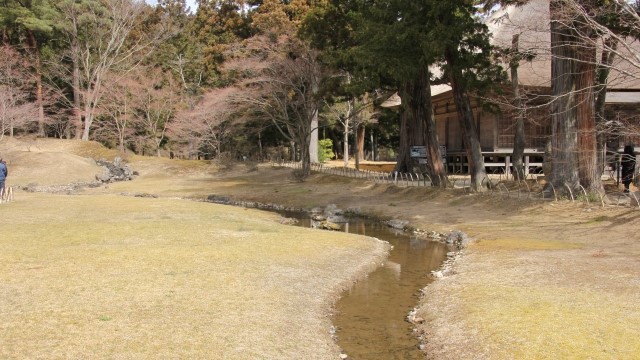
Yarimizu is a narrow, curved waterway that flows into a pond or spring built in a garden from the Nara to Heian periods.
Yarimizu was modeled after a natural stream, which passed under the floor of the building and poured water into a pond or spring and was made up of Soko (底) stones placed under the surface of the water, Mizu kiri (水切) stones to divert water, Yoko (横) stones to adjust the width of the stream, and Mizukoshi (水越) stones to create unevenness.
Karesansui (枯山水)
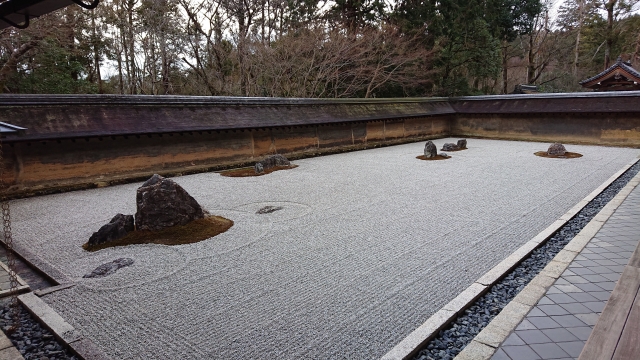
Karesansui is a form of garden that expresses a natural landscape without any water; Karesansui is said to be “a stone or stonework erected in the absence of a pond or Yarimizu,” but it became common during the late Kamakura and Muromachi periods. Eventually, many more sophisticated gardens of Karesansui were created, mainly in Zen temples.
Roji (露地)
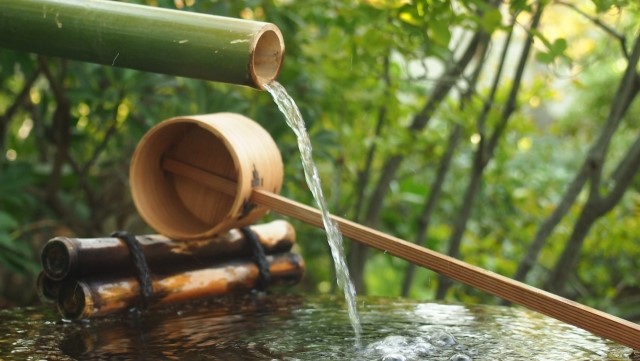
Roji is a garden around a tea room and is said to be an expression of the world of tea.
Shokusai (植栽)
Shokusai is a variety of trees planted in Japanese gardens. The evergreen cedar and camphor trees were considered the god tree in the olden days, and from the Nara period onwards, pine became the mainstay of Shokusai. Four-seasonal flowers and plants were also favored, but colors other than bamboo and moss were suppressed in Karesansui and Roji, with exceptional emphasis on autumn leaves. In the Edo period, the use of Japanese sago palm was also popular.
Keibutsu (景物)
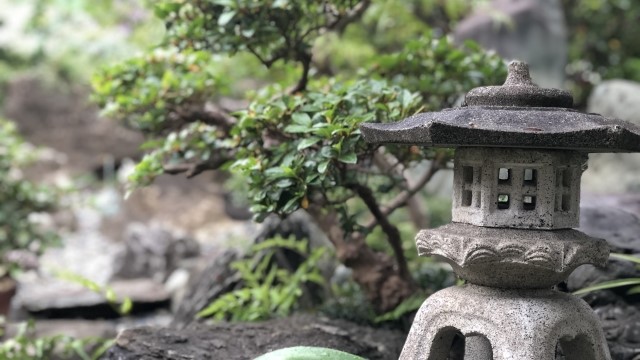
Keibutsu is used for Roji, which was developed by the tea ceremony.
Stone lanterns (Ishi toro) and hand-watering bowls (Chōzubachi) made from stone are essential elements of the garden that accompany a tea room. Since the birth of Roji in the Azuchi-Momoyama period, Keibutsu has become an integral component of Japanese gardens.
Stone (石)
Stone has been the most important element of the garden landscape since the Heian period. Natural stones are used in the garden and are placed alone or in combination.
Bridge (橋)
There were different types of bridges over the ponds and springs that were important elements of Japanese gardens, such as earthen, wooden, and stone bridges.
Main Japanese Garden
Korakuen garden (後楽園)
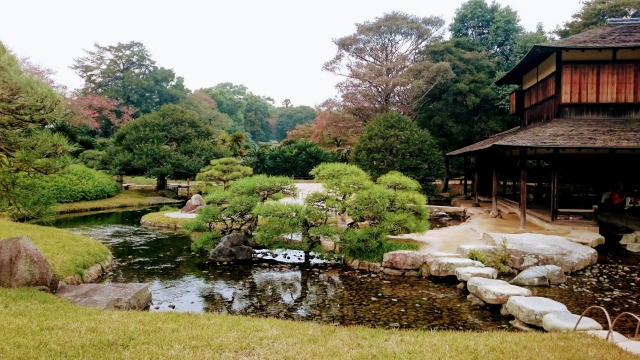 Korakuen Garden is considered one of the three best gardens in Japan.
Korakuen Garden is considered one of the three best gardens in Japan.
Construction of Korakuen Garden in Okayama Prefecture began in 1687 when Tsunamasa Ikeda, lord of the Okayama domain, ordered his retainers to begin construction, and it was completed in 1700. In 1952, it was designated a special place of scenic beauty in Japan, passing on its historical and cultural heritage to future generations.
The garden is characterized by the fact that it is a circular garden where you can see the changing scenery while walking on the lawn with ponds, hills, and waterways.
Byōdō-in (平等院鳳凰堂)
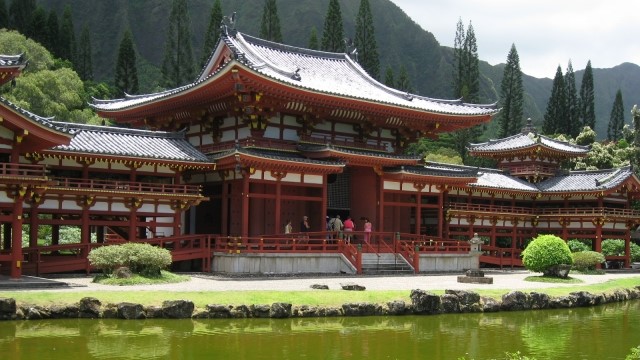
Byōdō-in is a Buddhist temple in the city of Uji in Kyoto Prefecture, Japan.
This garden was built by Yorimichi Fujiwara in the Heian period.
Rikugien garden (六義園)
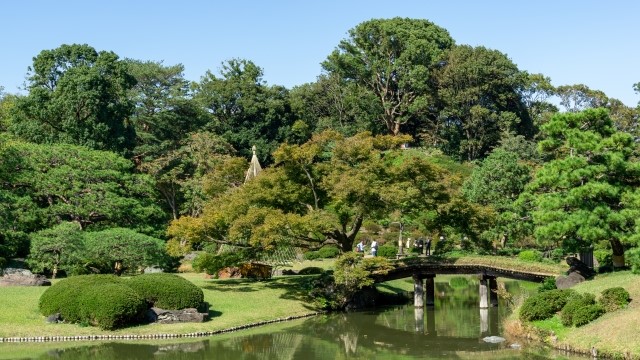
Rikugien Garden is a typical circular garden. In addition to the 88 scenic spots described in the Waka poem, the park is composed of various elements such as ponds, mountains, waterfalls, and mountain streams.
Even today, there are many Japanese gardens all over Japan.
Please visit if you are interested and enjoy the views that can be enjoyed in each of the four seasons of Japan.


